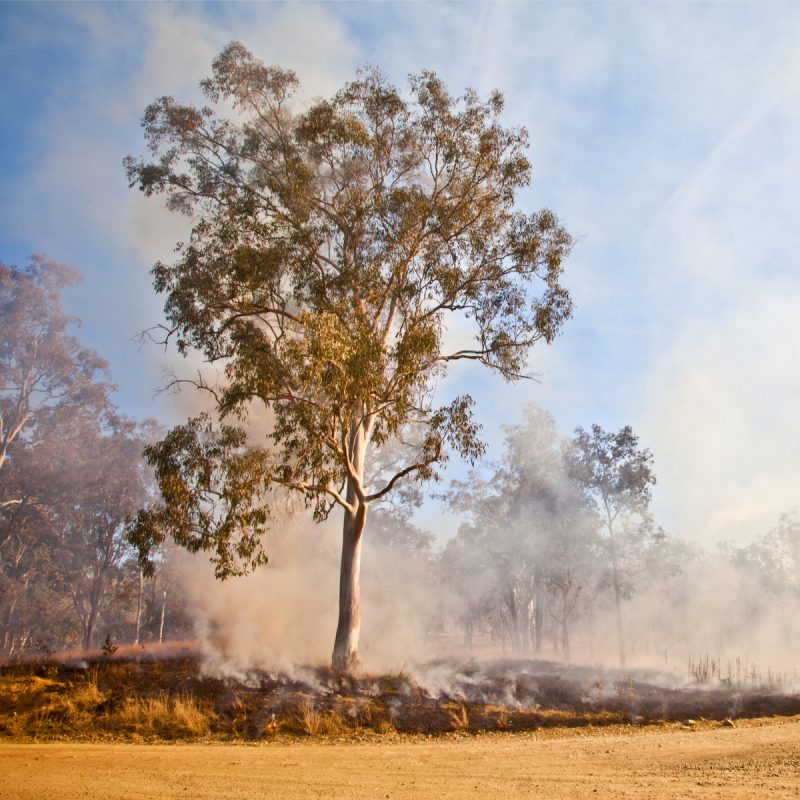The Australian bushfires are absolutely devastating. An untold amount of damage has been done, as millions of acres have burned in one of the worst fire seasons in Australian history. While authorities have confirmed that the latest bushfires were the result of both arsonists and a series of lightning strikes, what has gone unaddressed is the significant influence of climate change.
Climate Change and Fires
The fires that have raged throughout Australia did not reach their extreme severity only though arson and lightning. They are severe because 2019 was the driest and hottest year in Australian history, with regular patterns of dry and windy conditions where the fires ignited.
This is an important time to address the contribution of climate change to the extent and intensity of said fires. With increasing temperatures across Australia, seemingly small but realistically detrimental changes are taking place. Dry temperatures and hot conditions increase evaporation in the soil, which produces drier fuel for when an ignition does take place.
NPR reported that this current season has not seen abnormally high levels of arson, even though the fires themselves are abnormally severe. This means the exceptionally warm and dry conditions have exacerbated them.
The Australian government notes that climate change has influenced rising temperatures, decreased environmental moisture, and changed weather patterns and fuel conditions. These factors have directly influenced the frequency and severity of dangerous bushfires, not just in Australia, but around the world.
The changes in fire weather conditions are in part attributable to anthropogenic climate change because of increasing temperatures. Prof. Nerilie Abram, a climate scientist from the Australian National University, has identified a trend toward more serious fire conditions in Southern Australia through her studies.
High temperatures leave vegetation very dry for a long amount of time, and after a severe drought, it will conflagrate immediately and spread quickly. The drier the vegetation, the worse the drought. This dry vegetation will then go up in flames and spread that much faster.
As the high temperatures and extreme drought continue, they don’t just increase maximum temperatures or minimum levels of rainfall. They extend in either direction seasonally, which means that the otherwise short, dry periods become much longer and leave dry vegetation susceptible to fires for longer periods of time. Not only will fires within a given season be worse, but the fire season will start much sooner and end much later. It also means a higher risk of fire from natural causes, such as lightning. Increased atmospheric temperatures have a direct increase on the frequency of lightning.
Taking Charge of Change
Companies are expressing their prayers and sympathies for all those affected by the bushfires, and extend their sincerest gratitude to the first responders and international aid workers who have shown up to collectively battle the fires that continue to rage. As these firefighters and other first responders take action, so can you.
How can I Take Action?
If you are looking to take action now, there are many rescue efforts and volunteer organizations to which you can make a donation. These contributions can help institutions such as wildlife rescue operations or the Red Cross. Below is a list of Australian organizations:
- Australian Red Cross
- Australian Salvation Army
- Nature Conservancy Australia
- St Vincent de Paul Society in Australia
- World Wildlife Fund Australia
Below are US-based charities that will accept funding to be sent to aid the fight against Australian fires:
- American Red Cross
- Direct Relief
- Global Giving
- International Fund for Animal Welfare
- Save the Children
If you wish to donate directly to the local Australian fire services, you can visit NSW Rural Fire Service.
Can We Take Preventative Action?
You can make small changes, and take small steps in your everyday life, to help reduce the severity of climate change. These are not changes that happen with a single gesture. These are changes that only take effect when done with regular frequency by a large number of people.
Work with environmentally responsible companies. Evaluate your current business partners and only hire businesses that take an active interest in environmental sustainability. Encourage sustainability efforts in your workplace and at home, even in simple matters like environmentally friendly light fixtures, low flow toilets, or recycled paper products.
Focus on reducing your carbon footprint with sustainability over recycling. Sustainability stops the issue at the source, rather than trying to find something to do with the excess. By actively taking small steps to reduce our environmental impact, we can slowly work toward a better future with fewer fires.

